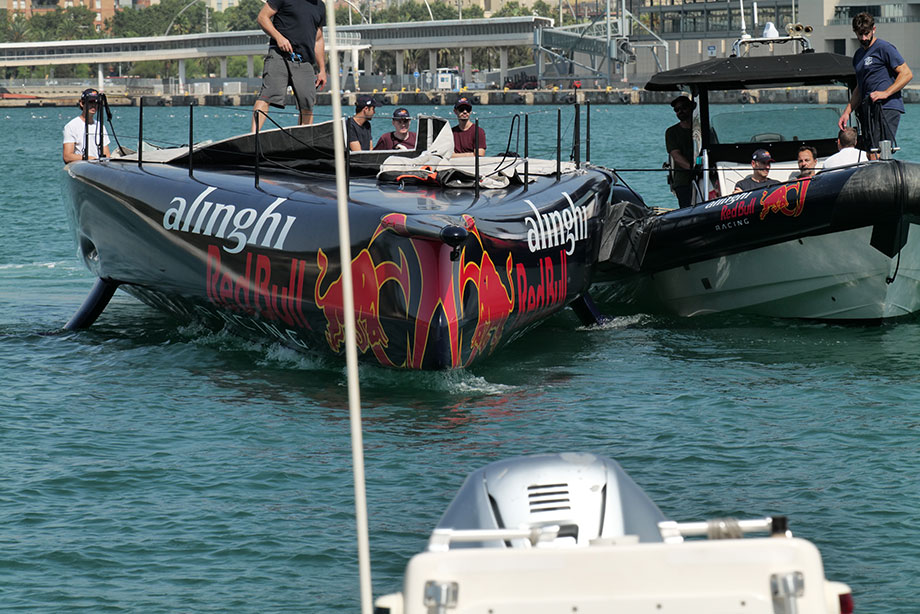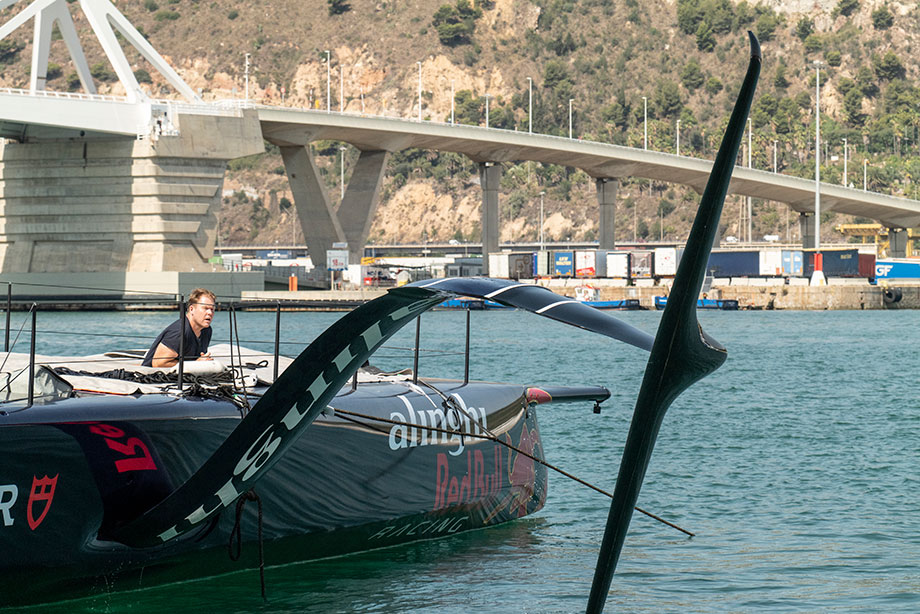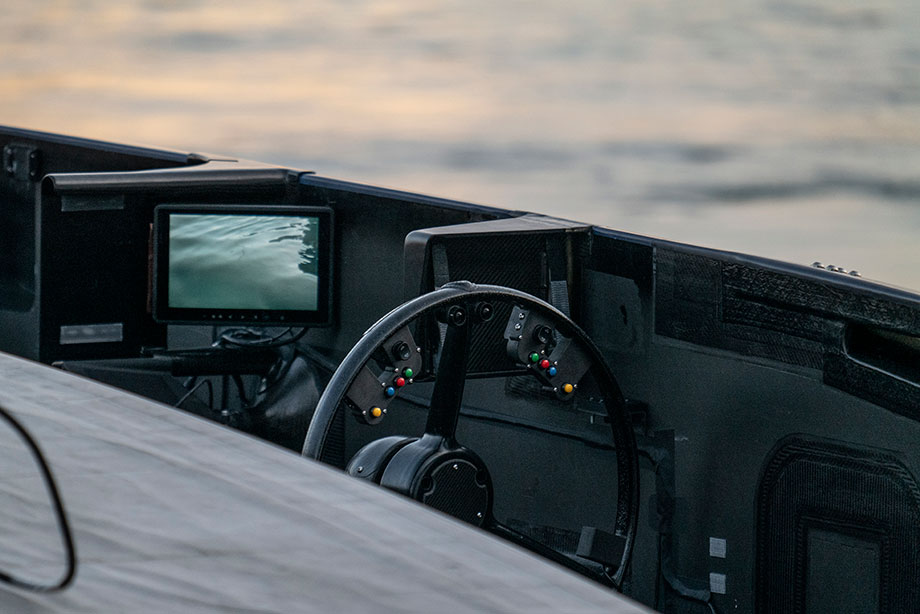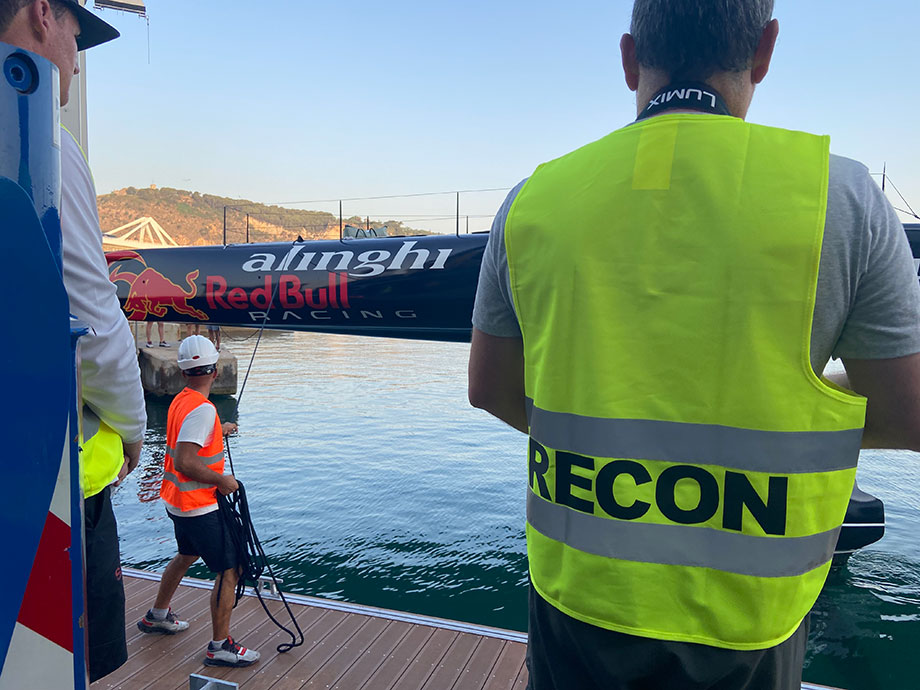Talk to any modern-day America’s Cup sailor and life at 50 knots is exhilarating. Scary at times. They are a breed apart from the average day-sailor or weekend sailboat racer and you are left wondering how their lives will ever be the same again.
The 50-knot barrier amidst fire-hose spray on a carbon bronco of a boat in the AC75 is an unforgiving place. It’s no place for amateurs and only the very best, at the peak of their physical and mental prowess make it onto these extraordinary vessels.
Competing in the America’s Cup requires what Dennis Conner, the American superstar sailor who famously lost the Cup in 1983 only to win it back in 1987 and defend again in 1988, described as the ‘commitment to the commitment.’ Team members are hired with an expectancy of round-the-clock endeavour to build and sail the fastest boat, develop systems and sails that are better than the competition and train like athletes. Security is as tight around America’s Cup teams as it is around naval bases on high alert during wartime. Guards, cameras, no-fly zones, waterway exclusions, base-passes and 24/7 patrols are very much the norm and every interview with a skipper or team member is a lesson in diplomacy where the least said possible is the order of the day. Nothing is given away.
Unique to the 37th America’s Cup, and set against this intense backdrop, is an ambitious joint reconnaissance programme, the brainchild of Emirates Team New Zealand’s Chief Designer, Dan Bernasconi, and championed by Event CEO Grant Dalton, that places dedicated teams of independent recon personnel within each team. It’s an uneasy truce. The recon units all know that they are being merely tolerated and the letter of the rule outlined in the Protocol and Technical Regulations is rigorously applied. No exceptions.

From an event perspective, a dedicated Recon Working Panel approves the individuals staffing the recon units who are charged with capturing a vast array of bespoke data, imagery and video content on a daily basis from when the boats roll out of the shed to the moment they are packed away in the evening. Furthermore, competing teams can submit open requests for specific points of focus and effectively charge the assigned recon unit in a specified team with getting satisfactory content for further analysis.
In the 36th America’s Cup in Auckland, individual teams employed their own recon personnel to go out on the Hauraki Gulf every sailing day and trail behind yachts as they practised whilst on dry land, the photographers’ long lenses were there to capture specific componentry, wing, hull and foil design before the boats were hurriedly shut behind base-shed doors. In short, the situation was becoming unsustainable, frustrating to many, dangerous at times as well as extremely expensive.
The new initiative is now in place and with Alinghi Red Bull Racing, splashing their first generation AC75 in the crystal waters of Barcelona for their appointed 20 days of sailing, the recon masterplan has begun in earnest. Having sat in on a few recon Zoom calls with all the team’s appointed panel members, privileged access was granted to join the Alinghi Red Bull Racing recon team on a planned day of tow-testing in the race area just off the beaches. With wind gusts of 25 knots and a steady, true westerly of around 22 knots forecasted for the day, the team called for a very early start.
I showed at the gates at 6.30am having walked around the port in the dry August morning heat from my hotel and a good half an hour earlier than I was expected. The team were all busy filing into the high-security complex of the Barcelona Nautic Center, Alinghi Red Bull Racing’s temporary base in Barcelona as the sun rose from the horizon and bang on the dot of 7am, the appointed time, I was welcomed in by Rodney Ardern, living legend of the America’s Cup and a mainstay on the very best glamour maxi yachts of the modern era. Rodney was charged with chaperoning me and making sure the recon unit stayed within the tramlines of acceptable access. Everyone is finding their rhythm with this new procedure – never before have recon personnel been allowed so close to the teams from the very start.
A briefing note had been sent through the night before detailing the launch protocol and with this being the very first time that the boat had fully immersed in testing mode having spent a few days back in the shed after its stunning launch, the precision that we have all come to expect from the Swiss was much in evidence. Standing at the base of the crane alongside the recon team, BoatZero was lifted on its 200-ton bright orange strops and the superbly professional shore crew, expertly, gingerly, brought the boat to water.

There on the dockside was Alex Carabi – a supremely talented Spanish photographer and an integral part of the appointed recon unit for Alinghi Red Bull Racing – zeroing in on every detail of the hull-form, foil arms and foils with a long lens and the expert eye of a marine photographer of the highest order. As the boat lowered, Alex’s shutter speed increased and a wealth of imagery was captured looking into the now completed cockpits, replete with camera screens, Playstation-style buttons on the skipper’s wheels and a wealth of detail from this first generation AC75.
The team of shore crew and sailors busied around the yacht, whilst the recon team all in fluorescent vests stayed well within permitted areas. It was expressly forbidden to photograph inside the base itself. Even walking down the jetty meant seeking approval and the sense of unease hung in the air as the Swiss went through a myriad of checks, foil drops and canting control protocols as the camera shutter clicked away.
Meanwhile, waiting patiently dockside was the other member of the recon team, Justin Busittil, a vastly experienced RIB driver operating on the global, grand-prix, foiling circuit. Originally from Malta, Justin has spent recent years trialling electric motor-cruisers in Monaco before applying online and securing the role in the recon unit for Alinghi Red Bull Racing as a stand-out candidate. His skills are not to be underestimated and the ease with which he commanded some 700hp of engine set on an 8.5 metre RIB was something of a marvel. And those skills will be needed as the recon teams are charged with capturing meaningful shots and data for the other teams to analyse. The RIB drivers will be placing their boats right into the action at eye-watering speeds, conscious not to encroach but getting the footage that the other teams will demand and expect.
Life at 50 knots for the recon units is no cake-walk. Whilst keeping in close proximity at all times, the units are recording huge amounts of data from the simple tagging of number of tacks and gybes completed through to mainsail analysis, jib usage, downtime, take-off speeds, wind range and angle, upwind/downwind VMG (Velocity Made Good), high and slow modes both upwind and downwind as well as providing full commentary on any breakages or incidents – and they will happen for sure.
Capturing the data is a skill – iPhones for voice memos and other personal recording devices complement the instrumentation onboard the RIB itself and it’s important that the data is accurate as the eyes of the Cup world are upon them. And they will be out in all weather. Barcelona in August is warm and dry but pretty soon the autumn storms blow in and life on the RIB becomes a different experience.

At the end of each session, the recon team’s work effectively begins in documenting all of the day’s data into a comprehensive spreadsheet and for the photographer, the uploading of RAW footage and video to highlight specific features from the day are then all placed into a highly visible recon cloud that all teams, and some media members, have access to.
From the recon cloud, teams wherever they are in the world, can start to run their own analysis and build up a performance picture using all manner of AI and prediction tools whilst for the fans, they will be able to tune in for regular summaries and articles breaking down and analysing the spy-shots, video and commentary from each team as their individual sailing programmes progress. This is access like never before in the America’s Cup and puts all interested parties into the loop on a daily basis.
Owing to the ingrained complexity of the AC75’s, and the windy 22 knot westerly forecast coming true bang on cue, Alinghi Red Bull Racing opted for a morning of systems testing dockside which was fascinating to watch as the technicians combined collaboratively with the sailing team, running through foil lifts and frightening drops as they worked through their testing schedule. I spied at least four laptops open on the decks whilst others were plugged into tablets, measuring, analysing, gauging, and tweaking. Team members were jumping down below into the carbon shell to check the maze of electronics and emerged bathed in sweat. It’s tough work in temperatures that topped out at 33 degrees. As the test programme progressed, the camera never stopped.
For many, the sight of an AC75 actually sailing in Barcelona will be thrilling. These boats have trained before in Europe (INEOS Britannia and Luna Rossa Prada Pirelli specifically) but with the wonderful vista offered by the Barcelona shoreline, there are no hiding places – boats will be in plain sight just yards off the beach. AC75s will be rocketing up and down the waterfront in relatively short order, a little over a year from now, and as fans you will have access, analysis and features that you can access at any time. Fear not if ‘anhedral’ foils, ‘boomless’ mainsails or ‘elevators’ are something of a mystery, the aim of our coverage is to de-bunk the tech, dive into the detail and document what is looking like being the closest America’s Cup in history.
It is said that the ‘devil is in the detail’ and as the new boats come to launch, the recon units will be there capturing every development detail that the pioneering designers, technicians and engineers of the 37th America’s Cup can muster. Small margins decide the fate of the America’s Cup and with the teams only allowed to build one AC75 for this cycle, the margin for error is minute.
When those boats launch in 2024, the recon units’ analysis will be pored over to the nth degree. It’s going to be fascinating to watch.















